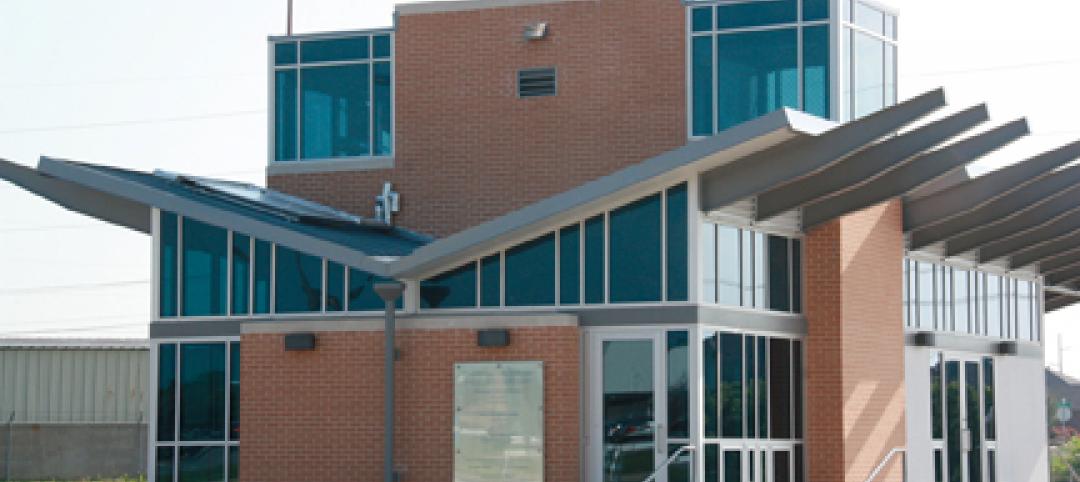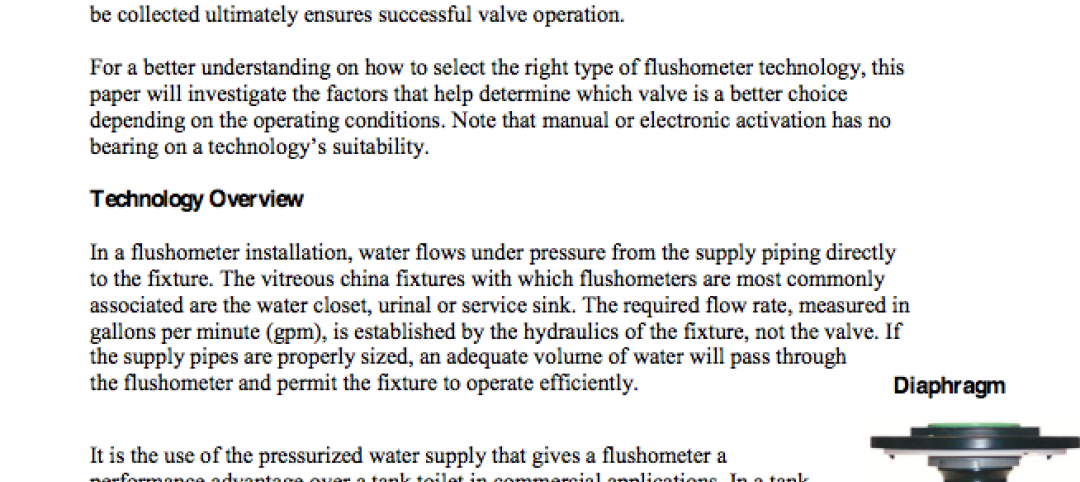U.S. school districts are widely planning to use funds from last year’s American Rescue Plan (ARP) to upgrade or improve air filtration and heating/cooling systems, according to a report from the Center for Green Schools at the U.S. Green Building Council (USGBC).
The report, School Facilities Funding in the Pandemic, says air filtration and HVAC upgrades are the top facility improvement choice for the 5,004 school districts included in the analysis. The top choice for spending federal funds was for staffing, followed by air filtration/HVAC at $5.5 billion.
Other categories of planned spending include $2.6 billion for repairing/improving school facilities; $271 million for upgrading windows, roofs, and doors; and nearly $11 million for UV lighting for disease mitigation. The average planned spending for air filtration and HVAC is about $260,000 per school. Around 500 school districts plan to spend over $1 million per school on one or more of these categories.
District interviewees said having substantial federal dollars was important to be able to invest in costly HVAC infrastructure projects, which would otherwise be delayed or addressed in phases. They also noted that they face constraints on their projects caused by the pandemic, associated supply chain issues, and the rising rate of inflation.

District interviewees noted that where HVAC upgrades were made in their schools, they were able to keep energy usage and costs to a minimum compared to schools with outdated systems.
More findings from the School Facilities Funding in the Pandemic study
- Although staff capacity, inflation and supply chain shortages are affecting infrastructure projects, school districts have prioritized significant ESSER III funding to support indoor air quality for their students and staff. Of all the funding categories tracked by Burbio, air filtration/HVAC was the second-highest category for district planned spending at $5.5 billion, just behind staffing/teachers/academic interventionists/guidance counselors.
- Of the 2,379 school districts that planned to spend any ESSER III funding on facilities, large districts planned to spend the lowest percentage (on average 22%) and small districts planned to spend the highest percentage of their total allocation (on average 30%).
- Small and medium-size districts (those with 20 or fewer schools) consistently reported more spending per school on facilities categories than their larger counterparts.
- In addition to filtration and HVAC improvements, in most cases, districts that planned to spend in this category also indicated plans to spend in at least one other facilities category, displaying a layered approach to addressing COVID at the building infrastructure level.
- The district interviewees highlighted the importance of having substantial federal dollars to invest in costly HVAC infrastructure projects, which would otherwise be delayed or addressed in phases.
- District interviewees noted that where HVAC upgrades were made in their schools, they were able to keep energy usage and costs to a minimum compared to schools with outdated systems. Similarly, interviewees reported positive results from spending in other facilities categories to reduce the spread of COVID.
The analysis included qualitative interviews with three school district facilities personnel and a quantitative analysis based on a data set of 5,004 school districts’ ESSER-III spending plans by the Burbio data service. The dataset contained information from school districts from all 50 states and the District of Columbia, representing approximately 74% of public-school students and roughly $83.1 billion in ESSER III funds.
Related Stories
| May 3, 2012
2012 BUILDING TEAM AWARDS: Rush University Medical Center
This fully integrated Building Team opted for a multi-prime contracting strategy to keep construction going on Chicago’s Rush University Medical Center, despite the economic meltdown.
| May 3, 2012
Best commercial modular buildings and marketing programs recognized
Judges scored entries on architectural excellence, technical innovation, cost effectiveness, energy efficiency, and calendar days to complete.
| May 3, 2012
Zero Energy Research Lab opens at North Texas
The living lab—the only one of its kind in Texas—is designed to test various technologies and systems in order to achieve a net-zero consumption of energy.
| May 3, 2012
NSF publishes ANSI standard evaluating the sustainability of single ply roofing membranes
New NSF Standard provides manufacturers, specifiers and building industry with verifiable, objective criteria to identify sustainable roofing products.
| May 3, 2012
Ground broken for $94 million hospital expansion at Scripps Encinitas
New facility to more than double emergency department size, boost inpatient beds by 43%.
| May 3, 2012
Rudolph and Sletten, Inc. wins CMAA award
Firm recognized for the renovation of Grossmont-Cuyamaca Community College’s Student Administrative & Griffin Student Center.
| May 2, 2012
Building Team completes two additions at UCLA
New student housing buildings are part of UCLA’s Northwest Campus Student Housing In-Fill Project.
| May 2, 2012
Sasaki selected for 2012 National Planning Firm Award
The award recognizes a firm for its body of distinguished work influencing the planning profession.
| May 1, 2012
White paper discusses benefits of diaphragm and piston flushometer valves
The white paper highlights considerations that impact which type of technology is most appropriate for various restroom environments.
| May 1, 2012
Time-lapse video: World Trade Center, New York
One World Trade Center, being built at the site of the fallen twin towers, surpassed the Empire State Building on Monday as the tallest building in New York.
















